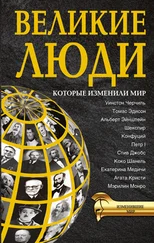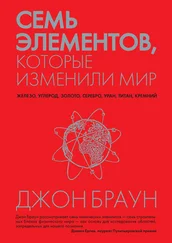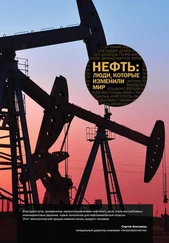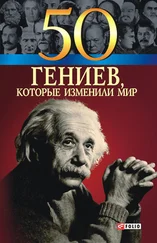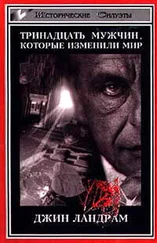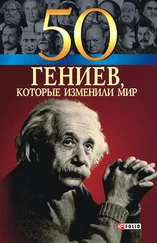Centers for Disease Control and Prevention. Guideline for Hand Hygiene in Health-Care Settings. Morbidity and Mortality Weekly Report 51 (RR-16), 2002. October. Pp. 1–33.
Dunlop D. R. The life and work of Louis Pasteur // The Canadian Medical Association Journal, 1927. November. Pp. 297–303.
Dunn P. M. Ignac Semmelweis (1818–1865) of Budapest and the prevention of puerperal fever // Archives of Disease in Childhood. Fetal and Neonatal Edition, 2005. Vol. 90. Pp. F345–F348.
Elek S. D. Semmelweis and the Oath of Hippocrates // Proceedings of the Royal Society of Medicine, 1966. Vol. 59. No. 4, April. Pp. 346–352.
The Encyclopædia Britannica: A Dictionary of Arts, Sciences, Literature, and General Information. 11th ed. Volume XVI. Lister, Joseph. New York: The Encyclopædia Britannica Company, 191.
Fleming A. Louis Pasteur // British Medical Journal, 1947. April. Pp. 517–522.
Fleming J. B. Puerperal fever: The historical development of its treatment // Proceedings of the Royal Society of Medicine, 1966. Vol. 59, April. Pp. 341–345.
Fred E. B. Antony van Leeuwenhoek: On the three-hundredth anniversary of his birth // Journal of Bacteriology, 1933. Vol. 25. No. 1. Pp. 1–18.
Godwin W. Memoirs of Mary Wollstonecraft. London: Constable and Co., 1928 // http://dwardmac.pitzer.edu/anarchist_archives/godwin/memoirs/toc.html.
Goldmann D. System failure versus personal accountability — The case for clean hands // The New England Journal of Medicine, 2006. Vol. 355. No. 2, July. Pp. 121–123.
Gordon J. I., Ley R. E., Wilson R. et al. Extending our view of self: The human gut microbiome initiative (HGMI) // http://genome.gov/Pages/Research/Sequencing/SeqProposals/HGMISeq.pdf.
Kaufmann S. H. E. Robert Koch, the Nobel Prize, and the ongoing threat of tuberculosis // The New England Journal of Medicine, 2005. Vol. 353. No. 23, December. Pp. 2423–2426.
Kaufmann S. H. E., Schaible U. E. 100th anniversary of Robert Koch’s Nobel Prize for the discovery of the tubercle bacillus // Trends in Microbiology, 2005. Vol. 13. No. 10, October. Pp. 469–475.
Klevens R. M., Edwards J. R., Richards C. S., Jr. et al. Estimating health care associated infections and deaths in U.S. hospitals, 2002 // Public Health Reports, 2007. Vol. 122, March — April. Pp. 160–166.
Krasner R. I. Pasteur: High priest of microbiology // ASM News, 1995. Vol. 61. No. 11. Pp. 575–578.
Louden I. The Tragedy of Childbed Fever. Oxford University Press // https://global.oup.com/academic/product/the-tragedy-of-childbed-fever-9780198204992?cc=ru&lang=en&.
National Institutes of Health. NIH Launches Human Microbiome Project. December 19, 2007 // http://www.nih.gov/news-events/news-releases/nih-launches-human-microbiome-project.
Nobelprize.org. Robert Koch: The Nobel Prize in Physiology or Medicine, 1905 // http://nobelprize.org/nobel_prizes/medicine/laureates/1905/koch-bio.html.
Nuland S. B. The enigma of Semmelweis — an interpretation // Journal of the History of Medicine, 1979. July. Pp. 255–272.
Pasteur L. On Spontaneous Generation. Address delivered at the Sorbonne Scientific Soiree, April 7, 1864 // Revue des cours scientifics, 1864. Vol. 1. April 23. Pp. 257–264.
Porter J. R. Louis Pasteur: Achievements and disappointments, 1861 // Pasteur Award Lecture, 1961. Vol. 25. Pp. 389–403.
Porter J. R. Antony van Leeuwenhoek: Tercentenary of his discovery of bacteria // Bacteriological Reviews, 1976. Vol. 40. No. 2, June. Pp. 260–269.
Semmelweis I. The Etiology, Concept, and Prophylaxis of Childbed Fever. Trans. K. Codell Carter. Madison, WI: The University of Wisconsin Press, 1983.
Tomes N. J. American attitudes toward the germ theory of disease: Phyllis Allen Richmond revisited // Journal of the History of Medicine, 1997. Vol. 52, January. Pp. 17–50.
Ullmann A. Pasteur-Koch: Distinctive ways of thinking about infectious diseases // Microbe, 2007. Vol. 2. No. 8. Pp. 383–387.
Глава 4
Adams A. K. The delayed arrival: From Davy (1800) to Morton (1846) // Journal of the Royal Society of Medicine, 1996. Vol. 89. February. Pp. 96–100.
Bigelow H. J. Insensibility during surgical operations produced by inhalation // Boston Medical and Surgical Journal, 1846. Vol. 35. Pp. 309–317.
Burney F. Eyewitness: Major Surgery Without an Anaesthetic, 1811 // Letters and journals of Fanny Burney // www.mytimemachine.co.uk/operation.htm.
Caton D. What a Blessing She Had Chloroform: The Medical and Social Response to the Pain of Childbirth From 1800 to the Present. New Haven, CT: Yale University Press, 1999.
Clark R. B. Fanny Longfellow and Nathan Keep // American Society of Anesthesiologists Newsletter, 1997. Vol. 61. No. 9, September. Pp. 1–3.
Collins V. J. Principles of Anesthesiology, 3rd ed. Philadelphia: Lea & Febiger, 1993.
Davy H. Researches, Chemical and Philosophical; Chiefly Concerning Nitrous Oxide or Dephlogisticated Nitrous Air, and Its Respiration. Bristol: Biggs and Cottle, 1800. См. также http://www.critical.ru/calendar/1712Davy.htm.
Desai S. P., Desai M. S., Pandav C. S. The discovery of modern anaesthesia — Contributions of Davy, Clarke, Long, Wells, and Morton // Indian Journal of Anaesthesia, 2007. Vol. 51. No. 6. Pp. 472–476.
Greene N. M. A consideration of factors in the discovery of anesthesia and their effects on its development // Anesthesiology, 1971. Vol. 35. No. 5, November. Pp. 515–522.
Jacob M. C., Sauter M. J. Why did Humphry Davy and associates not pursue the pain-alleviating effects of nitrous oxide? // Journal of the History of Medicine, 2002. Vol. 57, April. Pp. 161–176.
Larson M. D. History of Anesthetic Practice // R. D. Miller, ed. Miller’s Anesthesia, 6th ed. Philadelphia: Elsevier Churchill Livingstone, 2005.
Клиническая анестезиология / Дж. Э. Морган-мл., Мэгид С., Михаил. М.: БИНОМ, 2006.
Orser B. A. Lifting the fog around anesthesia // Scientific American, 2007. June. Pp. 54–61.
Rudolph U., Antkowiak B. Molecular and neuronal substrates for general anaesthetics // Nature Reviews. Neuroscience, 2004. Vol. 5, September. Pp. 709–720.
Smith W. D. A. A history of nitrous oxide and oxygen anaesthesia, Part I: Joseph Priestley to Humphry Davy // British Journal of Anaesthesia, 1965. Vol. 37. Pp. 790–798.
Snow J. On the Inhalation of the Vapour of Ether in Surgical Operations: Containing a Description of the Various States of Etherization. London: John Churchill, 1847.
Terrell R. C. The invention and development of enflurane, isoflurane, sevoflurane, and desflurane // Anesthesiology, 2008. Vol. 108. Pp. 531–533.
Thatcher V. S. History of Anesthesia, With Emphasis on the Nurse Specialist. New York: Garland Publishing, Inc, 1984.
Thoreau H. D. This Date, from Henry David Thoreau’s Journal: 1851 // http://hdt.typepad.com/henrys_blog/1851/index.html.
Thornton J. L. John Snow, Pioneer Specialist-Anaesthetist. John Snow website. Department of Epidemiology, School of Public Health, University of California, Los Angeles // www.ph.ucla.edu/epi/snow/anaesthesia5(5)_129_135_1950.pdf.
Катцунг Б. г. Базисная и клиническая фармакология: в 2-х т. М.: Бином, Диалект, 2007.
Глава 5
American Institute of Physics website. Marie Curie and the Science of Radioactivity // www.aip.org/history/curie/war1.htm.
Assmus A. Early History of X-Rays // BeamLine, 1995. Vol. 25. No. 2, Summer. Pp. 10–24.
Bowers B. X-rays: Their Discovery and Applications. London: Her Majesty’s Stationery Office 1970.
Brecher R., Brecher E. The Rays: A History of Radiology in the United States and Canada. Baltimore: The Williams and Wilkins Company, 1969.
Читать дальше
Конец ознакомительного отрывка
Купить книгу


